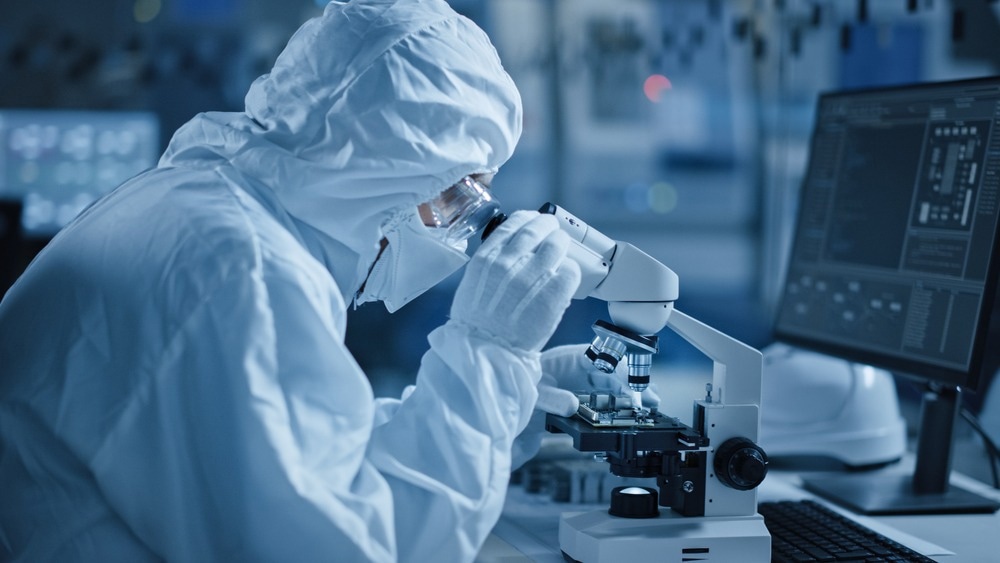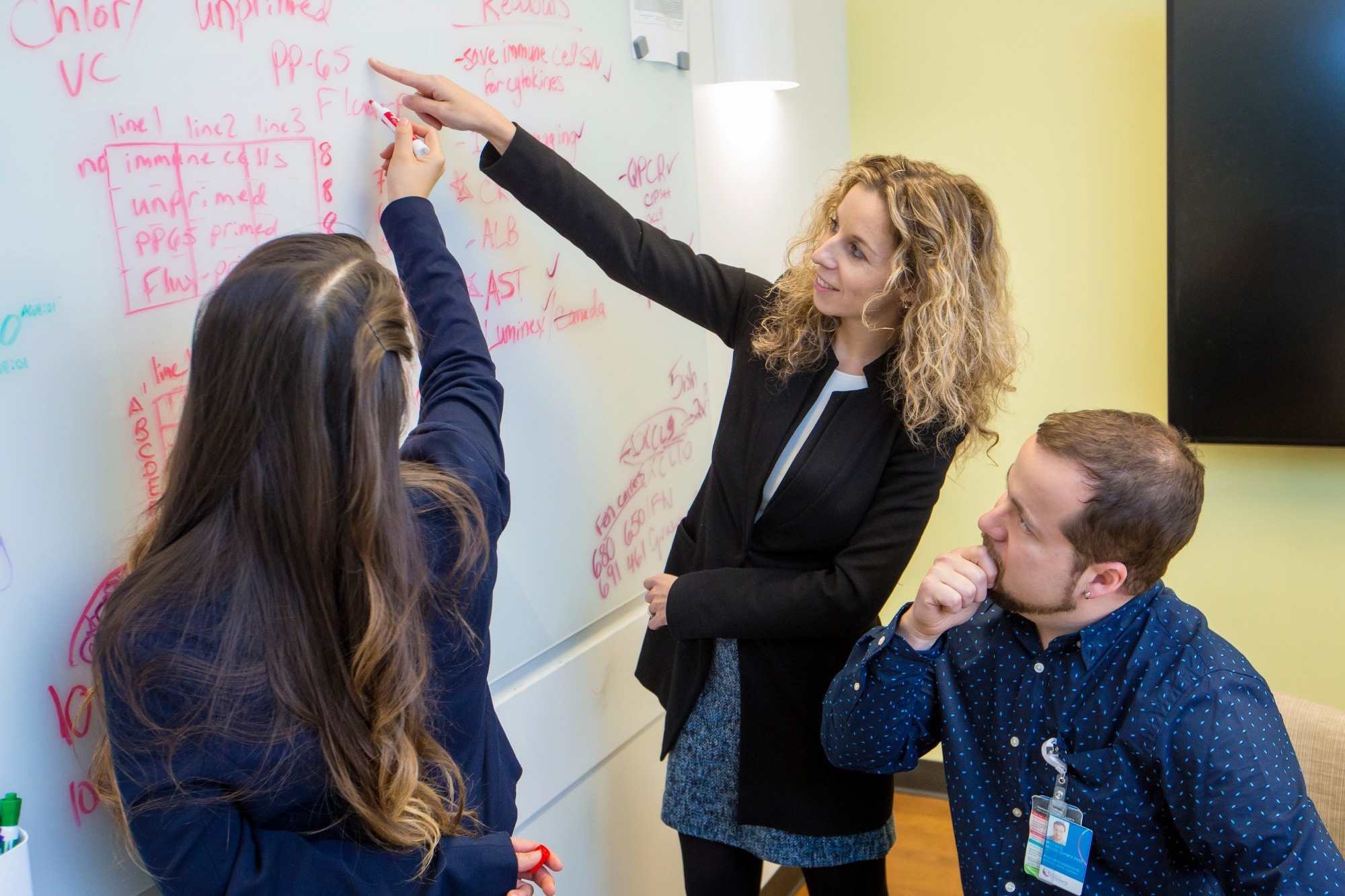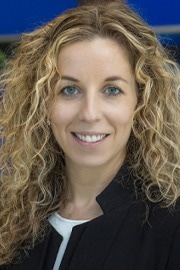In this interview, we speak to Magdalena Kasendra, Director of Research and Development at the CuSTOM Accelerator at Cincinnati Children’s, about organoid technology and how it has the power to revolutionize healthcare through the development of new, effective drugs and tissue replacement therapies.
Please can you introduce yourself and tell us what inspired your career in the life sciences?
My name is Magdalena Kasendra, and I'm a Director of R&D at the Center for Stem Cell and Organoid Medicine.
I can say that what inspired my career in the life sciences was a childlike sense of wonder about the natural world and a deep curiosity about how living organisms function. From a young age, I was captivated by the complexity and diversity of life and the seemingly endless possibilities of scientific discovery.
As I grew older, I became more and more interested in the field of biology and decided to pursue a career in the life sciences. I studied biology and genetics in college and graduate school and eventually found my way to the field of stem cell research and organoid technology.
What I find most exciting about this field is the potential for organoids to revolutionize healthcare. The ability to grow functional, three-dimensional organoids in a dish opens up a whole new world of possibilities for studying disease, developing new therapies, and understanding how cells and tissues function.
Working at the Center for Stem Cell and Organoid Medicine, I am surrounded by a team of dedicated and talented scientists who share my passion for discovery and innovation. I feel privileged to be a part of this community and to be able to contribute to the advancement of this exciting field. I am constantly inspired by the work we are doing here and the impact it will have on the future of medicine.
You are currently the Director of Research at the Center for Stem Cell and Organoid Medicine (CuSTOM). Please can you tell us more about your role and some of the work you are currently involved in?
As the Director of Research and Development at the CuSTOM Accelerator, my role involves spearheading a multifaceted initiative to convert cutting-edge discoveries in stem cell biology and organ development into practical and innovative solutions for unmet medical needs. One of the main areas of focus is the use of organoids to model human diseases and to test drugs in a more realistic and physiologically relevant manner. This approach can enhance the accuracy of preclinical drug safety and efficacy predictions, resulting in significant time and resources saved in the drug development process.
We are also actively working on developing organoids as a cell therapy for patients suffering from intestinal transplant rejection, a condition with no available alternative treatment options. The regenerative capabilities of stem-cell-derived intestinal organoids allow us to use them to replace damaged or diseased tissue, thus restoring normal function. This research has the potential to revolutionize the way we treat a wide range of human diseases and disorders in the future. In addition, we are also working on advancing the technology by developing new techniques for growing organoids and automating the process to increase the scalability of their production and reproducibility, making them more viable for use in various areas of preclinical and clinical research. This will also enable us to study organoids in more detail and explore new applications of this technology.
Our ultimate goal is to improve human health, and I am dedicated to ensuring that our research has a real impact on patients. We are constantly seeking new collaborations and partnerships to help us achieve this goal and bridge the gap between basic research and clinical application.
CuSTOM Accelerator Lab | Cincinnati Children's
CuSTOM aims to revolutionize personalized medicine, improving patient care through advancements in developmental biology and stem cell technologies. Why is this mission so important to CuSTOM, and how are these fields key to unlocking better healthcare?
The mission of the Center for Stem Cell and Organoid Medicine (CuSTOM) is to harness the latest advancements in developmental biology and stem cell technologies to revolutionize personalized medicine and improve patient care by developing innovative organoid-based solutions.
Developmental biology, the study of how living organisms develop, provides a deep understanding of the normal and abnormal development of organs and systems. Stem cell technologies, on the other hand, enable us to better understand and manipulate the development of cells, tissues, and organs.
By combining these two fields, we are able to generate induced pluripotent stem cells (iPSCs) and organoids, which are miniature versions of organs, from a patient's own cells. Despite their small size, these organoids have a tissue structure and physiology similar to that of normal organs. Organoids provide an unparalleled opportunity to study human organ development and pathology, investigate the underlying causes of disease, and serve as a novel platform for drug screening and personalized regenerative medicine.
Our efforts at CuSTOM are focused on utilizing organoids to improve human health. We believe this research can transform the way we treat a wide range of human diseases and disorders in the future. By creating new treatments and therapies tailored to the individual patient, we aim to enhance the effectiveness and safety of these treatments and ultimately unlock better healthcare for all.
CuSTOM is also composed of a multidisciplinary team consisting of scientists, clinicians, and entrepreneurs. Why is having a diverse team critical to research, especially when working to improve the health outcomes for millions worldwide?
Having a diverse multidisciplinary team comprising scientists, clinicians, and entrepreneurs is crucial for research aimed at improving the health outcomes for millions worldwide. This diversity promotes a holistic and comprehensive approach to solving complex medical challenges.
CuSTOM's scientists bring a wealth of knowledge and expertise in the underlying biology and conduct cutting-edge research that leads to new insights into human health and the development of innovative technologies. On the other hand, our clinicians possess an in-depth understanding of the clinical aspects of diseases and can provide valuable insights into the diagnosis, treatment, and management of various disorders. Entrepreneurs also bring a unique perspective and skill set, including business acumen and expertise in commercializing research and translating it into real-world applications.
The diversity of CuSTOM's team allows us to integrate different perspectives and experiences, enabling us to identify new opportunities and solutions that a single-discipline team might have overlooked. Additionally, it helps to ensure that our research is inclusive and considers the needs of the diverse patient population.
Furthermore, our multidisciplinary team plays a critical role in bridging the gap between basic research and clinical application and accelerates the translation of new discoveries into treatments and therapies that can improve health outcomes for millions worldwide. It is a key driver in advancing medical research and providing innovative solutions to improve patient outcomes and quality of life.

Image Credit: Gorodenkoff/Shutterstock.com
The drug discovery sector has seen incredible advancements in recent years. Despite this, many of these breakthrough discoveries are not directly impacting a patient's life as they are unable to leave the lab. Why is this, and how is your team trying to ensure that these safer and more effective drugs make a real impact?
There are several reasons why many breakthrough discoveries in the drug discovery sector are not directly impacting patients' lives. One reason is that taking a drug from the lab to the clinic can be long and complex. This process, called drug development, involves several stages, including preclinical testing, clinical trials, and regulatory approval. Each stage can take several years to complete, and many drugs fail to pass one or more of these stages due to safety concerns or lack of efficacy. Another reason is the high cost and uncertainty of drug development.
Developing a new drug can be a costly and time-consuming process, and many drugs that show promise in the lab do not make it to the clinic because the cost of development is too high or the probability of success is deemed too low. Additionally, many safe and effective drugs in the lab may not be effective in humans, or may have unexpected side effects that are only identified during clinical trials.
At the Center for Stem Cell and Organoid Medicine (CuSTOM), we are working to mitigate the risks associated with drug development by creating organoids from induced pluripotent stem cells (iPSCs), which are more representative of human physiology than traditional 2D cell cultures or animals used in the preclinical stage of drug development. By developing organoids from a diverse pool of patients, we can create a "population in a dish" that mirrors the genetic heterogeneity of the real-world population, allowing us to test treatments and therapies in a more representative and accurate manner, ultimately leading to more effective and inclusive solutions for patients.
Furthermore, by creating organoids from the cells of patients with specific genetic variations or disease subtypes, we can develop personalized medicine strategies and improve the precision of preclinical predictions; this will allow us to develop treatments tailored to the unique needs and characteristics of each patient. Importantly, we are working closely with other research institutions, biotech companies, and pharmaceutical companies to validate our methods and improve the translation of our research into real-world applications to ensure that safer and more effective drugs make a real impact in the near future.
You are giving a talk at SLAS 2023 titled 'Engineering next generation organoids for biomedical research and drug development'. Please can you talk us through what you will be covering in this talk and what listeners can expect to learn?
In my talk at SLAS 2023, I will discuss the latest advances in organoid technology and how we are using these advances to improve biomedical research and drug development. Specifically, I will be covering the following topics:
- Overview of CuSTOM's organoid technology: I will provide an overview of what organoids are, how they are created, and the advantages and limitations of using them in research.
- Next-generation organoids: I will discuss our new approaches to increasing tissue-tissue complexity and functionality of organoids.
- Organoids in drug development: I will talk about how we are using organoids to assess drug safety and efficacy and improve mechanistic understanding of adverse drug reactions.
- Challenges and future directions: I will discuss some of the current challenges in organoid technology, such as scaling up production, and exciting new developments, such as automation and 3D bioreactors, with the potential to overcome these challenges.
The audience can expect to learn about the latest advances in organoid technology, how organoids are being used to study diseases and test drugs, and the challenges and future directions in this field. They will also learn about how organoids can be used in regenerative medicine, which is an important area in healthcare.
Overall, the talk will provide an overview of the current state of organoid technology and its applications in biomedical research and drug development.
Are you hopeful that with continued research surrounding precision medicine, we will see this becoming more commonplace within healthcare settings? What would this mean for patients worldwide?
Personalized medicine is promising to improve healthcare outcomes by providing patients with more targeted and effective treatments tailored to their unique genetic makeup, lifestyle, and medical history. Advances in genetic testing, CRISPR-based gene editing, machine learning algorithms, and stem cell technology have the potential to accelerate the pace of discovery in personalized medicine. However, there are also challenges, such as the high cost of genetic testing and personalized treatments, which may limit access to these therapies for some individuals.
With continued research and investment, we can hope to see personalized medicine becoming more commonplace in healthcare settings and see this approach's benefits reach more patients. This can lead to more effective and efficient treatments, fewer side effects, and improved patient outcomes. Additionally, personalized medicine can help to reduce healthcare costs by avoiding unnecessary treatments and reducing the number of ineffective drugs.

Image Credit: Gorodenkoff/Shutterstock.com
To ensure the bench-to-bedside translation of organoid technology, you rely on building strategic partnerships with biopharmaceutical companies and leading academic institutions to make this dream a reality. How important are these partnerships in commercializing this technology, and how do scientific conferences such as SLAS help to promote these partnerships?
Building strategic partnerships with biopharmaceutical companies and leading academic institutions are critical for the commercialization of organoid technology, as these partnerships can provide the resources, expertise, and funding needed to bring this technology from the laboratory to the clinic. Biopharmaceutical companies can provide expertise in drug development and commercialization, while academic institutions can provide access to cutting-edge research and clinical expertise. Together, these partnerships can help to accelerate the development and testing of organoids for use in drug discovery and development, as well as for personalized medicine.
Conferences such as SLAS (Society for Laboratory Automation and Screening) can also play an important role in promoting these partnerships by bringing together experts from different fields and providing a platform for networking and collaboration. These conferences provide opportunities for researchers and industry professionals to share their latest findings, exchange ideas, and discuss potential collaborations. Additionally, through these conferences, researchers and industry professionals can learn about the latest developments in organoid technology and the challenges that need to be overcome for this technology to be translated into the clinic.
What is next for you and your work at CuSTOM? Are you involved in any exciting upcoming projects?
The field of organoids is rapidly advancing, and at the CuSTOM, we are working on several cutting-edge projects that have the potential to revolutionize healthcare. Some of the most notable and important projects that I'm involved in include:
- Using organoids for tissue replacement therapy: We are developing organoids as a potential cell therapy for conditions such as intestinal transplant rejection. This includes creating cGMP-compliant and scalable manufacturing methods, developing organoid cryopreservation techniques, and evaluating organoid safety and efficacy in preclinical studies. The goal is to use organoids to replace damaged or diseased tissue and restore normal function, and this research has the potential to transform the way we treat many different human disorders in the future.
- Understanding the intricacies of immune-mediated adverse drug reactions: Our research utilizes liver organoids in conjunction with autologous immune cells to investigate the underlying molecular mechanisms of immune-mediated drug-induced liver injury. This approach allows us to gain a deeper understanding of the complex interactions between drugs and the immune system and how they can lead to adverse reactions. This knowledge can be used to develop safer and more effective therapeutics, improve the safety of current drugs, and ultimately enhance patient outcomes.
- Improving the scalability and efficiency of organoid research: We are developing new automation techniques to improve the efficiency and scalability of organoid research. This will enable us to generate large numbers of organoids quickly and at a low cost and improve the translation of organoids into real-world applications that can be adopted across preclinical and clinical research.
These are just a few examples of projects currently underway at CuSTOM. As the field of organoids continues to evolve, we can expect an exponential increase in the number of innovative and impactful applications of this technology in the future.

Image Credit: CuSTOM
Despite the significant increase in public awareness surrounding scientific breakthroughs, largely in part due to the COVID-19 pandemic, only 30% of researchers worldwide are women. What advice would you give to young women and girls wanting to start a career in science? What makes you proud to be a woman in science in today's world?
To young women and girls considering a career in science, I would say that it is a field that offers endless opportunities for discovery and innovation and that your contributions can make a real impact on the world. I would also advise them to find a mentor or role model who can provide guidance and support. Additionally, it is important to not be discouraged by any obstacles or discrimination you may face, but instead to stay focused on your goals and keep working hard towards them.
As a woman in science today, I am proud to be part of a community of brilliant, dedicated, and passionate scientists working to improve human health and well-being. I am also proud of the progress that has been made in recent years in increasing the representation of women in science and in creating a more inclusive and equitable culture in the field. It is my hope that through continued hard work, mentorship, and determination, we will continue to see more and more women in leadership positions in science and that we will continue to make progress toward a more diverse and inclusive scientific community.
Where can readers find more information?
About Magdalena Kasendra
Magdalena Kasendra is the Director of Research and Development at the Center for Stem Cell & Organoid Medicine (CuSTOM) at Cincinnati Children’s Hospital. She leads a multifaceted effort to translate breakthrough discoveries in stem cell biology and organ development into innovative organoid-based solutions to address unmet medical needs. These include organoid-based platforms enabling the discovery and development of safer and more efficient drugs, precision medicine applications, and organoid-based tissue replacement therapies.
Prior to joining CuSTOM's leadership team, she managed the multidisciplinary team responsible for developing, translating, and commercializing Organs-on-Chips technology at Emulate Inc., a spin-off from Harvard's Wyss Institute for Biologically Inspired Engineering. This research has led to major advances in the bioengineering of intestinal tissue by combining microchip manufacturing methods and organoid technology and demonstrated the utility of this platform in drug development, disease modeling, and precision medicine.
Dr. Kasendra's career spans industry, academia, and the start-up world. She performed her PhD project at Novartis Vaccines and Development, which was followed by a post-doctoral research fellowship at the Harvard Medical School and the Wyss Institute for Biologically Inspired Engineering at Harvard University. She has authored numerous publications and patents.